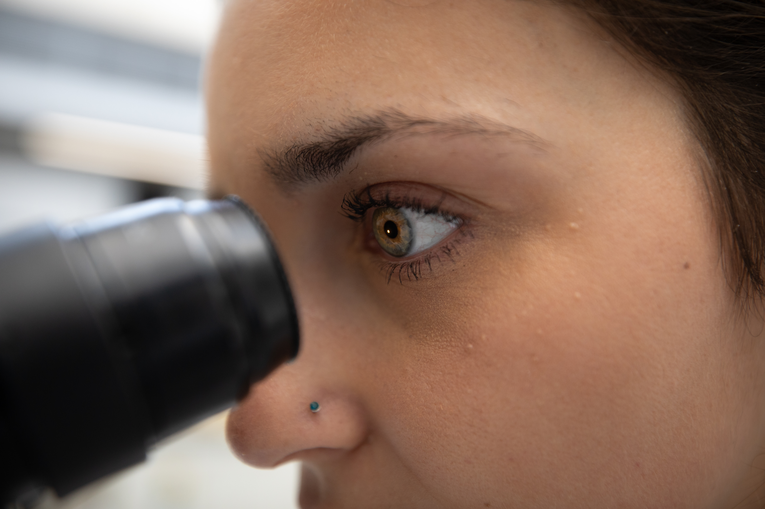
https://www.gosh.nhs.uk/news/rates-of-short-sightedness-increasing-in-the-uk/
Rates of short-sightedness increasing in the UK
19 Jan 2022, 7 p.m.
New research suggests our changing environment, as well as changing gene-environment interactions, could explain increasing rates of short-sightedness over time in the UK.
New research into short-sightedness changes
Short-sightedness is when objects in the distance appear blurred. It is thought to affect around 1 in 3 people in the UK and is becoming more common. While often treatable with glasses or even surgery, this can be costly.
This new research has been conducted by a team from Great Ormond Street Hospital, the UCL Great Ormond Street Institute of Child Health (UCL GOS ICH) and the UK Biobank Eye and Vision Consortium.
- With a paperpublished in PLOS ONE, the team studied data from 107,442 people within the UK Biobank study aged between 40 and 69 years old.
- As part of the study everyone underwent a detailed eye exam and provided information about their history of vision problems.
- This extensive data was then used to study changing levels of short-sightedness in people born between 1939 and 1970.
- The researchers showed that, within the study, there were a higher number of people diagnosed with short-sightedness within the younger population than those born between 1939 and 1944.
What is happening to our sight?
- The team found that 20% of those born between 1939 and 1944 were short-sighted, whereas 29% born between 1965 and 1970 were short-sighted.
- As the large increase was seen in such a short period of time, the team believe that this must be due to environmental factors as genes do not change as quickly.
- They also noted that their data suggested this trend of increasing levels of short-sightedness began some time ago, and not just in the past decade.
The researchers also looked at demographic data like ethnicity and gender to try and find other contributors to this rising levels of short-sightedness.
- For instance, they noted there was an association between higher levels of education and short-sightedness, with the link becoming stronger over time.
Professor Jugnoo Rahi is the senior author of this study, as an Honorary Consultant Ophthalmologist at Great Ormond Street Hospital and Professor of Ophthalmic Epidemiology at UCL GOS ICH.

"There are lots of theories about what may be causing the increasing levels of short-sightedness, with a lot of interest in our changing ‘viewing habits’," explains Professor Rahi.
In our lives we tend to do a lot more ‘near viewing’ particularly in education and our social lives. At the same time, we do less distance viewing (outside), especially as more and more people live in urban communities
How do we protect our sight?
Professor Rahi also notes that we need to start looking at ways to slow the rate of short-sightedness as a population or we will have increasing numbers of people with high levels of short-sightedness (a prescription of greater than –5.0) which increases the chances of complications like blindness.
- At the moment, there is not conclusive evidence that changing our viewing habits, like increasing our outdoor viewing, will combat this rise.
- However, spending more time outdoors, and therefore increasing our long-distance viewing, has other well-established mental and physical benefits.
- There are also ongoing large-scale trials to understand how interventions such as eye drops, or certain lenses may impact the progression of short-sightedness
The causes of short-sightedness are complex with both genes and environment contributing.
"As societies evolve, the changing environment mean that the balance and relative importance of each may be changing.
"Our team has shown here that there is a clear rise in the rates of short-sightedness, likely due to changing environmental factors and we now need to understand how we can slow these rises."

This new research has been conducted by a team from Great Ormond Street Hospital, the UCL Great Ormond Street Institute of Child Health (UCL GOS ICH) and the UK Biobank Eye and Vision Consortium.
All research at Great Ormond Street Hospital is underpinned by the NIHR GOSH BRC.
The full research article can be found on the PLOS ONE website.

‘Ready-made’ T-cell gene therapy tackles ‘incurable’ T-Cell leukaemia
A groundbreaking new treatment using gene-edited immune cells, developed at GOSH and UCL has shown promising results in helping children and adults fight a rare and aggressive cancer

GOSH manufactures new gene therapy for rare condition
A specialist laboratory team based at Great Ormond Street Hospital have manufactured a new gene therapy to treat a baby with the rare genetic condition, Hunter Syndrome.

Celebrating the Impact of the Professor Maria Bitner-Glindzicz Memory Fund
The third annual report of the Maria Bitner-Glindzicz Memory Fund has just been compiled - The fund continues to support ground-breaking research and early career development.

